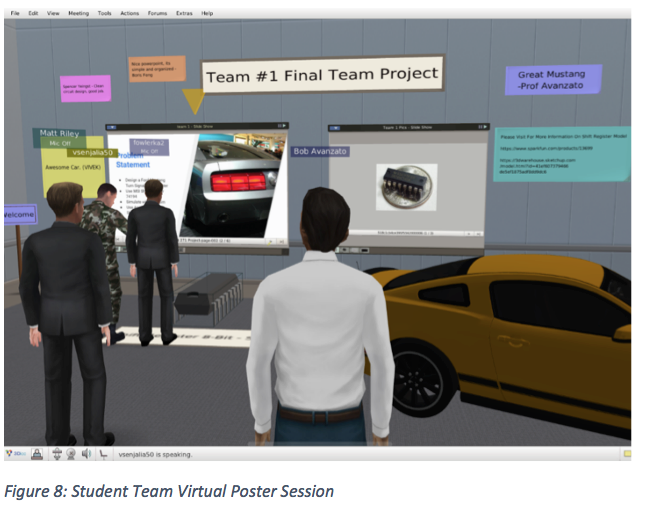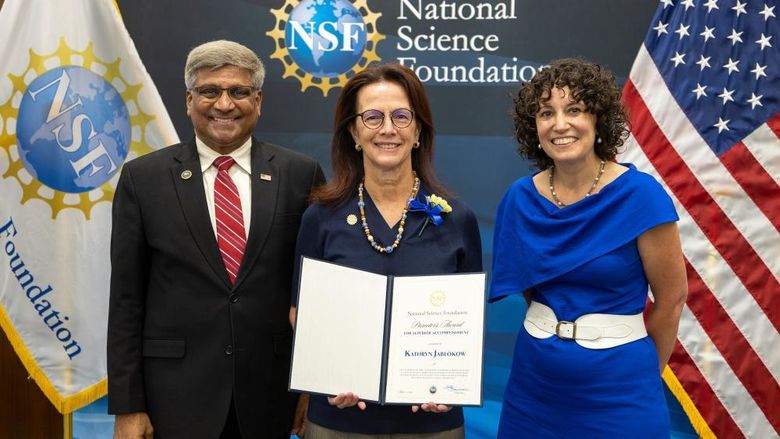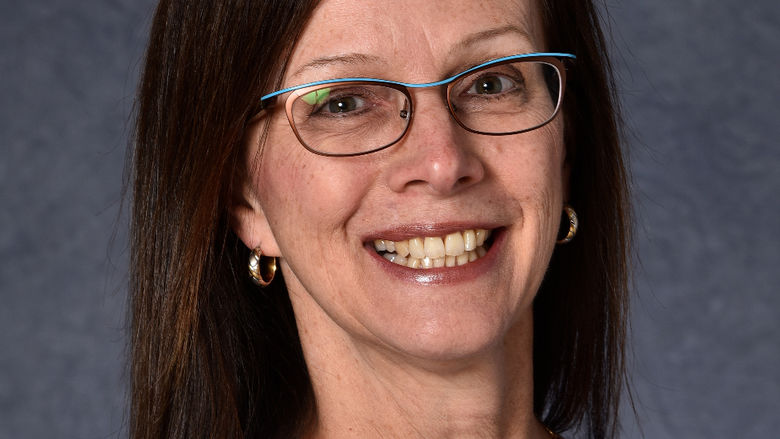
ABINGTON, Pa. — A study by a Penn State Abington faculty member evaluated the use of a virtual-world technology to support student collaboration in two online computer courses. The abstract of the study by Robert Avanzato, associate professor of engineering, was accepted by the American Society of Engineering Education for its national conference in June.
Although the academic performance was comparable to online offerings of the same course without the use of the technology, it expanded the scope of the course by improving engagement and facilitating student team collaboration.
According to Avanzato, as online engineering courses become more prevalent, virtual-world technology will play an integral role in offering a more engaging and academically rich environment, especially in the area of student collaboration, communication and interaction with 3D models.
Avanzato first weighed the advantages and drawbacks of online learning. The benefits include access to learning resources, flexible scheduling, meeting demands of nontraditional and adult students, multicampus and international participation, and accommodating learning preferences for many students.
Some of the challenges of online education include student isolation, difficulty collaborating with other students for team projects, and challenges in the effective presentation and sharing of the team projects.
Avanzato evaluated the technology in two sophomore-level courses, CMPSC 201 Programming for Engineers and CMPEN 271 Digital Design. Known as Terf Virtual World Technology, it provides a persistent 3D immersive environment in which students log into the platform with personalized avatars and enter customized virtual workspaces that support avatar navigation, text chat, voice communication, and a webcam.
“It’s a potentially useful tool for both traditional face-to-face learning and online learning,” he said. “The students can collaborate and be more fully involved.”
Course materials and lectures can be made available to the students through virtual-world technology, as well as 3D models such as circuit boards and microcontrollers. These immersive 3D features and communication capabilities go beyond the feature set of traditional course management systems, and the virtual-world acts as a supplement to the course management system.
Avanzato combined the virtual-world technology with the general engineering major’s telepresence robot to offer a tour of the Penn State Great Valley undergraduate engineering suite. The students in the virtual world were able to share the live video from the telepresence robot as it navigated through the lab and interacted with students.
“But most importantly, it allowed student teams to work collaboratively to share documents, display documents and images on virtual display panels to facilitate team projects, and improve student interaction and communication,” Avanzato said.
The virtual-world technology has several distinct advantages over conventional collaboration tools, including the immersive nature of avatar-based interactions; the availability to customize 3D virtual environments such as lecture halls and laboratory spaces; virtual instrumentation based on the course topics; and the ability to import relevant 3D models into the virtual space.
“It had the advantage, too, of enhancing my online office hours to make it more convenient and immersive for students,” Avanzato said.
The technology could be used to support other majors as well by creating virtual spaces for coursework in business, nursing, and geology as examples.
Overall, the technology used in this study supported many activities including special topics lectures on robotics, virtual discussion sessions involving 3D models of micro controllers and virtual office hours. It also included a virtual poster session in which teams of students presented work that could be viewed in a 3D environment by students in other courses and visitors from around the globe.
“The feedback from the students was very positive and the virtual-world technology allowed the instructor to assign group activities and strengthen student interaction in an online course that would not have been possible without this tool,” Avanzato said.
Avanzato teaches engineering at Abington as well as courses for the general engineering multidisciplinary option (MDE) at Penn State Great Valley.
The MDE option of the Penn State general engineering degree is delivered by a consortium composed of Penn State Abington, Penn State Brandywine, and Penn State Great Valley.
The $2.5 million engineering facility where students take their final two years of coursework is located at Great Valley, about 30 miles from Abington. Shuttle service from Abington to Great Valley is available.
The general engineering program is accredited by ABET, the Accreditation Board for Engineering and Technology.





